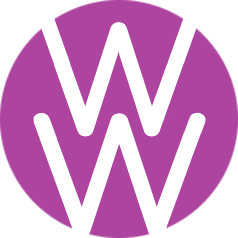|
|
|
| Bandwidth |
|
The amount of information your connection to the Internet can carry,
usually measured in bits per second. |
| Completely Automated Public Turing Test to Tell Computers and Humans Apart |
CAPTCHA |
A common web technique used to help
ensure that your respondents are real humans and not a program written to spam you. |
| Cascading Style Sheets |
CSS |
A style sheet language used to give style to an HTML document.
This includes fonts, colors, sizes, spacing, borders, backgrounds and much more. |
| Client Side |
|
Any action that takes place on the user's
(the client's) computer. This is also referred to as the
front-end.
The client of a website would be the web browser that is viewing it. |
| Cookies |
|
A small text file created by a website, stored in a visitor’s computer.
They are designed to hold a modest amount of data specific to a particular client and website, such as login information. |
| Cyan Magenta Yellow Black |
CMYK |
A scheme for combining primary pigments, typically used for printing color images.
The "K" is the key color, which in today's printing world is black. |
| Domain Name |
|
A unique name (e.g. google.com) used to identify the location of a website on a web server. |
| Domain Name Server |
DNS |
The Internet’s equivalent of a phone book or directory.
The web keeps an updated list of domain names and translates them to IP addresses. |
| Error 404 |
|
An error indicating the page you're trying to reach cannot be found. |
| Hosting |
|
In order to get a website online, you need to
host (or save) your website files on a Web server connected to the internet.
GoDaddy is an example of a web hosting company. |
| Hyperlink |
|
An electronic connection between one web page and another.
These are usually highlighted and underlined. |
| Hypertext Markup Language |
HTML |
A language used to create the content of a webpage.
HTML webpages are usually viewed in a web browser, and can include text,
links, images, sound and video. |
| Hypertext Preprocessor |
PHP |
A server side scripting language used for web development;
can be embedded into HTML.
PHP makes a webpage dynamic, such as processing user input from an HTML form. |
| HyperText Transfer Protocol |
HTTP |
The protocol over which data is sent between your
browser and the website you’re connected to. |
| HTTP Secure |
HTTPS |
The secure version of HTTP. |
| Internet Protocol Address |
IP |
A unique numerical label assigned to each device connected
to the Internet, including computers, phones, tablets, servers, cars, and more. |
| Internet Service Provider |
ISP |
The company that provides you with access to the Internet. |
| Javascript |
js |
A client side programming language, meaning the source code is processed
by the client’s web browser rather than on the Web server.
This allows the language to run actions on a page after a page has been fully loaded.
For example, gathering user input from an HTML form. |
| Nested |
|
When one object is embedded in another object of the same type. In the case of HTML or CSS, a nested tag or property takes on its parent's attributes, the parent takes on its parent's attributes, and so on. |
| Pixel |
|
The basic unit of programmable color on a computer display or in a computer image.
The physical size of a pixel depends on how you've set the resolution for the display screen. |
| Red Green Blue |
RGB |
A system for representing the colors to be used on a computer display.
Red, green, and blue can be combined in various proportions to obtain any color in the visible spectrum.
Levels of R, G, and B can each range from 0 to 100 percent of full intensity. |
| Red Green Blue Alpha |
RGBA |
An extension of RGB where A (alpha) specifies the opacity.
The opacity is a number between 0.0 (fully transparent) and 1.0 (fully opaque). |
| Server Side |
|
Any action that takes place on a web server.
This is also referred to as the back-end. |
| Search Engine Optimazation |
SEO |
The process of improving the rankings of a web page
(or website) in a search engine such as Google. |
| Uniform Resource Locator |
URL |
The file address of a resource on the Internet.
A URL can represent a web page, an image, a video, and much more. |
| User Interface |
UI |
The design by which the user and a computer system interact.
The UX decides what to paint, it's the UI that paints the canvas. |
| User Experience |
UX |
The process of creating products that provide meaningful and relevant experiences to users. |
| Web Browser |
|
A software application used for accessing information on the Web.
Popular web browsers include Google Chrome, Mozilla Firefox, and Internet Explorer.
Page appearances can vary depending on the browser. |
| Web Host |
|
A web host, or web hosting service provider, is a business that
provides the technologies and services needed for a website or webpage to be viewed on the Internet. |
| Web Server |
|
Web Servers are special computers used to store, process and deliver web pages to clients. |
| Website |
|
One or more webpages connected to a common URL on the internet.
A website requires both a domain name and a web host. |

